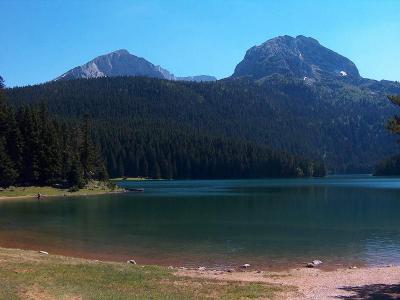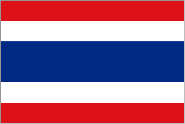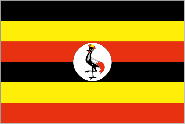District
Taxonomy Term List
Advancing Albania’s planning for medium and long-term adaptation through the development of a National Adaptation Planning (NAP) process
This project is designed to help the Government of Albania increase its capacity to address the country’s climate change vulnerabilities by supporting the development of a national plan for climate change adaptation. The support focuses on 1) strengthening the national mandate, strategy and steering mechanism for assessing and addressing capacity gaps (particularly in the priority sectors of tourism, urban development, agriculture, transport, and energy); 2) develop a National Adaptation Plan (NAP) Strategy action plan and implementation plan, and 3) develop financing, monitoring and evaluation strategies to ensure that capacities and funding options are institutionalized for the long-term sustainability of adaptation planning beyond the life of the project.
With financing from the Green Climate Fund, the project "Advancing Albania’s planning for medium and long-term adaptation through the development of a National Adaptation Plan (NAP) process" is supporting the Government of Albania to increase its capacity to address the country’s climate change vulnerabilities.
Albania’s primarily rural population is highly vulnerable to the effects of climate change, where extreme rain events frequently result in destructive flooding, while agricultural livelihoods and drinking water supplies are threatened during dry periods. As temperatures rise, climate scenarios predict increased severity and frequency of these extreme wet and dry conditions, along with decreasing annual rainfall. These changes place Albania’s population at risk and pose a threat among others to the hydropower and tourism industries.
To address these vulnerabilities, the Government of Albania launched its NAP process in February 2015, with the support of GIZ and UNDP, through consultations with national stakeholders and a stocktaking exercise. A preliminary roadmap for the NAP implementation was formulated and validated by representatives from the Ministry of Tourism and Environment, as well as stakeholders from the Inter-ministerial Working Group on Climate Change (IMWGCC).
The analytical exercises highlighted the existing weaknesses and demonstrated the prevailing barriers to climate change adaptation (CCA) planning in Albania. The results confirmed that to adequately address climate change vulnerabilities, Albania must overcome information gaps, vulnerability assessments, climate adaptation planning capacity weaknesses, and a lack of awareness of CCA – both at national and sub-national levels. In addition, climate change is not integrated into existing environmental and development policies or their associated budget priorities, and financing appropriations for adaptation are absent.
The underlying challenge lies in the lack of a comprehensive framework for adaptation in Albania. The National Communications provide a preliminary assessment of adaptation priorities, while a national NAP Framework Document was developed as part of the NAP preparation and stocktaking process in 2016. To leverage these preliminary activities towards climate resilience, this readiness effort aims to address the weaknesses and barriers identified in the NAP Framework Document.
In September 2021, Albania submitted its National Adaptation Plan, including a comprehensive financing strategy to the UNFCCC.
The project aims at delivering the following results under the three main outcomes:
- Strengthen legal and institutional framework and mandate for climate change adaptation work at the national level;
- Upgrade stocktaking on climate vulnerabilities, adaptation opportunities and development needs and update vulnerability analyses;
- Address adaptation related capacity gaps at national and subnational levels;
- Establish long-term adaptation capacity development methodologies to ensure ongoing skills development and increased awareness of climate change adaptation;
- Formulate NAP Strategy action plan and the accompanying communications plan;
- Promote CCA integration into existing planning and budgeting and cross-sector coordination;
- Develop NAP implementation plan;
- Establish systems to monitor NAP process and adaptation progress;
- Identify options for securing and scaling up financing for adaptation; develop a financing plan.
Project Updates
After the inception workshop in December 2021, the project, in collaboration with stakeholders, established criteria for selecting up to eight municipalities for climate change adaptation roadmaps and identified priority sectors for analysis. UNDP signed a Memorandum of Understanding with Tirana Polytechnic University and the Institute of Geosciences (IGEO) to foster cooperation.
The project also supported the development of a new legal proposal to update the mission of the IGEO to include CCA, as well as the operational manual for the Interministerial Working Group on Climate Change and a draft reporting format for the National Climate Change Committee (NCCC).
Since 2022, the project team has accelerated project implementation, making significant progress in strengthening the institutional framework and capacities for CCA planning. This involved concluding procurement services to implement activities.
Recent successes include the establishment of the NCCC and the finalization of its Operations Manual, the development of a Monitoring, Reporting, and Verification (MRV) system, and progress on legal acts related to the IGEO. Additionally, work was undertaken on climate and socio-economic data analysis, inventory of adaptation projects, capacity assessment at national and subnational levels, and training programs.
In 2023, various stakeholders were engaged and sensitized on the NAP process. Activities have included refining vulnerability and risk assessments, developing a national database for climate change scenarios and sector vulnerability assessment, compiling a regional climate change scenario report, finalizing the expanded stocktaking report organized by priority sectors, and delivering guidelines and screening tools for gender-sensitive CCA planning.
Outcome 1: Institutional and capacity gaps assessed and addressed.
Outcome 2: NAP Strategy action plan finalized and implementation plan in place.
Outcome 3: Financing strategy and monitoring and evaluation for climate change adaptation in medium – to long-term established


Readiness for the National Adaptation Plan Process in Bosnia and Herzegovina
The project “Advance the National Adaptation Plan (NAP) process for medium-term investment planning in climate sensitive sectors in Bosnia and Herzegovina (B&H)” supported the Government of Bosnia and Herzegovina to advance the National Adaptation Plan (NAP) process and reach goals outlined in the Paris Agreement and 2030 Agenda for Sustainable Development. The project activities enabled the government to integrate climate change-related risks, coping strategies and opportunities into ongoing development planning and budgeting processes.
Bosnia and Herzegovina’s National Adaptation Plan (NAP) builds on the country’s Climate Change Adaptation and Low Emission Development Strategy of 2013. The strategy is based on four specific outcomes: supporting evidence-based policy development for climate change risks, vulnerabilities and opportunities; creating effective institutional and regulatory frameworks; mainstreaming climate change adaptation approaches into decision making; and effectively assigning resources and reaching implementation goals. The implementation of the strategy has slowed mainly due to lack of knowledge and institutional capacity to undertake adaptation measures.
To overcome these challenges, the project advanced adaptation planning in B&H with a focus on sectoral approaches, upgrading the knowledge base for adaptation, prioritizing adaptation interventions for the medium term, building institutional capacities for integrating climate change adaptation, and demonstrating innovative ways of financing adaptation at sub-national and local government levels. The project activities resulted in the compilation of a NAP and an implementation strategy focused on scaling-up adaptation in key sectors for the medium-term. Through the project, the Government of Bosnia-Herzegovina developed municipal-level investment financing instruments with public and private sector engagement, and built national, sub-national and sectoral capacity to integrate and mainstream risk informed planning and budgeting.
Extreme climate events in Bosnia and Herzegovina are becoming more frequent; with seven out of the past 16 years experiencing drought and frequent floods. Annual temperature increases and change of precipitation are resulting in extreme weather conditions: heat waves, waves of extreme cold, and windstorms. The economic damages are vast, especially in the water, agricultural and housing sectors. The total economic impact of the 2014 floods is estimated to have reached EUR 2.04 billion, or 15 percent of the country’s GDP in 2014.
The NAP process in Bosnia and Herzegovina was officially launched in 2016 with a national consultation that engaged sector ministries and local government units via associations of cities and municipalities in Republika Srpska and Federation of B&H. B&H has put great emphasis on climate change as one of the most significant development challenges facing the country. The importance of adaptation was clearly reflected in its National Communications to the UNFCCC and Climate Change Adaptation and Low Emission Development Strategy (CCA LEDs), adopted in 2013. This strategy is based on four specific outcomes covering climate change risks, vulnerabilities and opportunities supporting evidence-based policy development, effective institutional and regulatory framework, mainstreaming CCA approaches into decision making, and effective resourcing with timely and effective implementation. However, its implementation has slowed mainly due to lack of knowledge and institutional capacity to attract finances and undertake adaptation measures.
The main identified barriers are:
- Limited institutional capacities and weak vertical and horizontal coordination for adaptation planning and implementation caused by complex administrative structure and top-down approach, limited stakeholders’ participation in B&H strategic planning for adaptation, inadequate level of technical knowledge on climate change adaptation of staff in sectoral ministries, limited training on climate change issues and low capacity to monitor, forecast, archive, analyse, communicate, and use climate risks and impacts for sectors.
- Limited climate Information to support integration of climate change into planning and budgeting due to limited scientific data and information on climate impacts and vulnerability assessments, limited knowledge of current climate variability, and a lack of systematic information on environmental protection.
- Alternative sources of finance, including innovative funds are not optimized as neither climate change adaptation, nor disaster-risk reduction (DRR) activities are included in budgeting on any level (municipal, cantonal, entity), and effective finance plan for securing adequate funds from a range of sources for adaptation does not exist.
The key results of the project include:
- An institutional framework to coordinate adaptation processes was established. The framework is based on four levels (NDA, nominated institutional coordinators, nominated interagency working group, and formed multi-disciplinary NAP drafting team).
- The first BiH NAP document was drafted identifying most vulnerable sectors and necessary adaptation actions in agriculture, water management, biodiversity, forestry, human health and tourism, with planned actions estimated over US$4.2 billion. Information on climate change impact and scenarios have been upgraded and vulnerability assessments have been completed for the most vulnerable sectors agriculture and water. The NAP document is currently under adoption at the state level.
- The Standard Operating Procedures (SOPs) for horizontal and vertical institutional cooperation on climate data exchange as well as the corresponding M&E framework have been adopted as part of the NAP document. The SOPs will enable cross-sectoral climate data/information exchange to support an effective monitoring and evaluation (M&E) framework, track implementation and assess the effectiveness of adaptation actions taken to enable regular updates of the NAP.
- The Project supported adjustments to the regulatory framework necessary for successful implementation of climate change adaptation activities in the country and for meeting B&H’s obligations to the EU and the UNFCCC. This included amendments to the Law on Environment and development of strategic documents related to flood risk management to achieve alignment with the EU Approximation.
- The NAP Communication Strategy has been developed and implemented leading to the development of numerous communication products to increase knowledge and awareness on adaptation processes including a presentation at the COP 26. Project stakeholders are particularly proud of the Photo Essay on adaptation activities and potential for actions in B&H cities, which was also shared by the GCF.
- Studies on the socio-economic impacts of climate change on hydro-energy potential for two river basins (Trebisnjica and Vrbas) were undertaken, as well as a Study on socio-economic impacts of climate change on agriculture in one of most productive agricultural areas within the Sava Basin. These studies constitute the basis for informing planning and implementation of adaptation actions in water management and agriculture sectors.
- Studies assessing risks of urban torrential waters were conducted in two pilot cities (Tuzla and Banja Luka) and adaptation options were developed to improve adaptation planning in local communities.
- Trainings were conducted to build capacity of over 900 government staff for assessment, prioritization, and implementation of climate change adaptation actions as well as for development of reporting, monitoring and review mechanisms.
- Climate change data management system has been designed for the first time in B&H to enable climate data collection, exchange and assessment. The Platform is based on agreed SOP and the corresponding M&E framework will enable regular update of the NAP and other climate reports, tracking of climate data trends, implemented adaptation actions and its effects.
- Finance mechanisms, tools, and new financing approaches for adaptation finance are developed in four municipalities (Laktasi, Zenica, Sanski Most and Trebinje) to enhance adaptation investments at the local level. All four municipalities have developed and adopted their local Climate adaptation finance strategies and investment plans, developed project concepts, and were trained on adaptation finance mechanisms, benefiting over 320 participants from the four pilot municipalities.
- The Project developed two GCF Project Concept Notes (for water and agriculture sectors as the most vulnerable to climate change) and prepared the first Climate Adaptation Finance Strategy at the country level.
Outcome 1: Effective national adaptation coordination system established to drive the NAP process
Outcome 2: Capacity for climate vulnerability assessments, development of socio-economic scenarios strengthened, and adaptation options prioritized for two key sectors
Outcome 3: Innovative financing strategy for adaptation investments developed and tested in four to five selected municipalities
Exposure story: A race against nature (2019)
Exposure story: Giving trees (2019)
Exposure story: Fixing farming (2019)
Exposure story: Managing risk (2019)
Choosing peaches over apples (2021)
True Value (2021)
The Peak of Resilience (2021)
Climate change academy trainings held (2021)
Changing what we eat to help the planet (2021)
Exposure story: Financing for survival (2022)
Exposure story: Cities at the crossroads (2022)
NAP Bulletin PDF (2022)
NAP Bulletin PDF (2021)
U Tesliću održan okrugli sto na temu prilagođavanja klimatskim promjenama u Bosni i Hercegovini (2022)

Support for strengthening climate change adaptation planning for the Federal Republic of Somalia
The project aims to strengthen the national and state level capacity and coordination for climate change adaptation planning and implementation in Somalia. Barriers in effective adaptation include weak institutional coordination and capacity for adaptation planning and implementation at the federal level, a lack of technical, institutional, and managerial capacity for climate change adaptation planning at the state level, and a lack of investment planning and enabling conditions for financing climate change adaptation interventions. The project aims to support the government in overcoming these barriers considering the double challenge Somalia faces - the threats of internal conflict within the region and effects of climate change simultaneously. These unique circumstances require a different approach to addressing climate adaptation priorities, and Somalia’s National Adaptation Plan (NAP) process must be consistent with these governance challenges with specific attention paid towards the fragility of the country.
The project "Support for Strengthening Climate Change Adaptation Planning for the Federal Republic of Somalia" project is supporting the Government of Somalia to strengthen the national and state level capacity and coordination for climate change adaptation planning and implementation. The project builds on the foundation that was created when the country formulated its National Adaptation Programme of Action (NAPA) in 2013. The project addresses the priorities that were elucidated in the country’s Nationally Determined Contribution (NDC) and is consistent with the ratified National Development Plan.
Somalia is among the most vulnerable countries to climate change in the world. Somalia’s arid and semi-arid lands make up more than 80% of the country’s landmass and are prone to extreme weather conditions including periods of extended drought, highly erratic rainfall, and strong winds. Droughts occur frequently and are often followed by devastating floods. Recent studies indicate that droughts have intensified in terms of their frequency, severity and geospatial coverage over the last 50 years. Flooding and droughts have been identified as the primary climate threats in Somalia’s Nationally Determined Contributions. Climate impacts multiply existing threats to the attainment of food and water security, productive livelihoods, health and human development capabilities of the people of Somalia. Climate impacts also exacerbate conflicts over natural resources and contribute to the challenges posed by large numbers of internally displaced persons. A major factor contributing to vulnerability is the political instability and internecine conflict that has vexed Somalia since 1991. Somalia’s context of fragility requires that climate adaptation is integrated within the process of dealing with crises and addressing governance challenges to contribute to a greater stability.
The project has three primary outcomes focusing on enhancing the national institutional coordination, strengthening capacity for climate change adaptation planning at the national and state level, and strengthening financial planning for climate change adaptation. Expected results include:
- Climate change adaptation capacities and interagency coordination at key agencies strengthened;
- Tools, methodologies, and information platform to support the NAP process developed;
- State climate change adaptation frameworks developed and harmonized with the national framework;
- Preliminary climate change adaptation plans formulated at the state level;
- Climate change adaptation mainstreamed into institutional and governance support at the state level;
- NAP implementation financing plan formulated.
The project has been designed to integrate with the ongoing nation building and associated initiatives that aim to strengthen governance and institutions. The project activities are planned in states where UNDP already has ongoing operations in order to avoid potential security related risks.
Project updates
- The project supported the establishment of the National Climate Change Coordination Committee (NCCCC) in collaboration with the Directorate of Environment and Climate Change (DOECC) as per the Climate change policy of Somalia.
- An institutional review of roles and responsibilities of national institutions has been conducted identifying capacity gaps to effectively adapt to climate change within priority sectors and key ministries. The results inform further project activities such as the capacity development at the Directorate of Environment and Climate Change. Currently, a study is being conducted to clarify and formalize the roles of federal, state, and district governments to improve federal-state coordination on the formulation and implementation of policies, strategies, plans, and programs related to climate change adaptation.
- A steering committee was established that will ensure coordination with the 9th National Development Plan (NDP9) Pillar groups and ensure alignment with the national DRR strategy and the Sendai Framework and other relevant programs and initiatives to support the climate change adaptation planning. The Steering Committee consists of government agencies, civil society organizations, state governments, development partners, private sector and others.
Outcome 1: National institutional coordination and capacity for adaptation planning enhanced.
Outcome 2: Strengthened capacity for climate change adaptation planning at the state level.
Outcome 3: Strengthened financial planning for climate change adaptation.


Increasing resilience to climate change impacts in marine and coastal areas along the Gulf of Thailand
The project aims to integrate climate change adaptation into marine and coastal area related planning and budgeting in the Gulf of Thailand with a focus on agriculture, fisheries, and tourism. The project builds on Thailand’s National Adaptation Plan (NAP) process and focuses thematically on marine and coastal areas and sub-national level adaptation planning. The project’s objectives are to be achieved through three key outcomes: enhancing capacities for climate risk-informed marine and coastal area development planning; strengthening NAP implementation and mainstreaming adaptation in planning and budgeting in marine and coastal areas; and developing financing strategies for climate adaptation. This GCF NAP Readiness project is expected to provide an important contribution to the implementation of Thailand’s National Adaptation Plan (NAP), prepared by the Office of Natural Resources and Environmental Policy and Planning (ONEP), which provides an overarching planning framework for addressing climate change adaptation.
The project “Increasing resilience to climate change impacts in marine and coastal areas along the Gulf of Thailand” is designed to contribute to the implementation of Thailand’s National Adaptation Plan (NAP). The main objective of the project is to integrate climate change adaptation into planning and budgeting for marine and coastal areas. The project aims to address barriers that hinder information, knowledge, and coordination for adaptation planning; technical capacities for integration of risk informed approaches in planning and budgeting; and lack of options to attract financing for climate change adaptation, particularly from the private sector.
Marine and coastal areas of the Gulf of Thailand are expected to experience significant impacts of climate change, with increase in extreme events, sea-level rise, climate induced erosion, drought, and flooding that affect local tourism, agriculture, fisheries, natural resources and create additional stress on land and water resource management. Vulnerability is heightened due to the dependence on a limited number of economic sectors, namely agriculture and tourism. Due to their low coping capacity, limited awareness of and high exposure to climate change risks and impacts, women, young children, the elderly, the disabled, and economically marginalized social groups are the most affected by unmitigated climate change impacts and fewer income and employment generation opportunities. Therefore, there is a clear need for capacity building in communities, decision-makers, and the private sector to raise awareness about climate change risks and facilitate adaptive development planning.
The project complements other initiatives supporting the NAP implementation in Thailand. Thailand’s NAP (draft prepared in 2018) identified six key sectors: (1) water management; (2) agriculture and food security; (3) tourism; (4) public health; (5) natural resource management; and (6) human settlement and security. This project will focus on addressing gaps of current support programmes. The project will work towards improving climate-responsive natural resource management through the integrative approach of enhancing adaptation planning and budgeting in key marine and coastal economic sectors, targeting agriculture, fisheries, and tourism. The project will focus on 18 coastal provinces along the Gulf of Thailand. The overall timeline of Thailand’s NAP implementation allows this project to utilize best-practices and information from other interventions, to expand the knowledge-base and regulatory framework, particularly for the sub-national level, and to revise and update Thailand’s NAP. The following sub-outcomes (outputs) are expected to be delivered by the project:
- developed knowledge base on climate change impacts, risk, vulnerabilities, and adaptation options in marine and coastal areas, and disseminated information;
- enhanced technical capacity for planning, budgeting, and implementation of adaptation;
- updated and developed NAP monitoring modalities;
- participatory review, prioritization, and appraisal of adaptation options for climate-induced hazards affecting marine and coastal areas undertaken;
- strengthened institutional coordination for the NAP process;
- improved climate-risk informed business development and planning at the provincial, sub-district, and local levels;
- identified viable options and mechanisms for scaling up adaptation finance, including through public-private partnerships, and drafted financing strategies and concept notes;
- facilitated integration of best practices into the NAP process.
Project updates
In addition to the organization of in-person and online inception workshops, the project has conducted climate change impact projections, risk, and vulnerability assessment in 4 selected provinces of 18 coastal provinces namely Rayong, Petchaburi, Surattani and Songkhla. Select criteria of each province have been considered including existing climate risk map assessment results and gross provincial product (GPP). The climate change impact projections focused on key climate threats such as flood, drought, sea level rise, and sea surface temperature. Climate risk and vulnerability assessments have been conducted on coastal and marine resources including three key economic sectors - agriculture, fisheries, and tourism. The results of the climate change impact projections, risk and vulnerability assessments are key information to disseminate to public through a climate adaptation platform and geographical information system (GIS) and provides the basis for capacity building and consultations with sub-national government officers and local and other stakeholders. Currently, the platform has been developed and integrating the results of the studies.
Outcome 1: Enhanced capacity and knowledge to enable climate risk-informed marine and coastal area development planning at the sub-national level;
Outcome 2: Strengthened existing NAP implementation and mainstreamed adaptation in planning and budgeting in marine and coastal areas;
Outcome 3: Financing strategies for climate change adaptation in marine and coastal areas identified and developed.
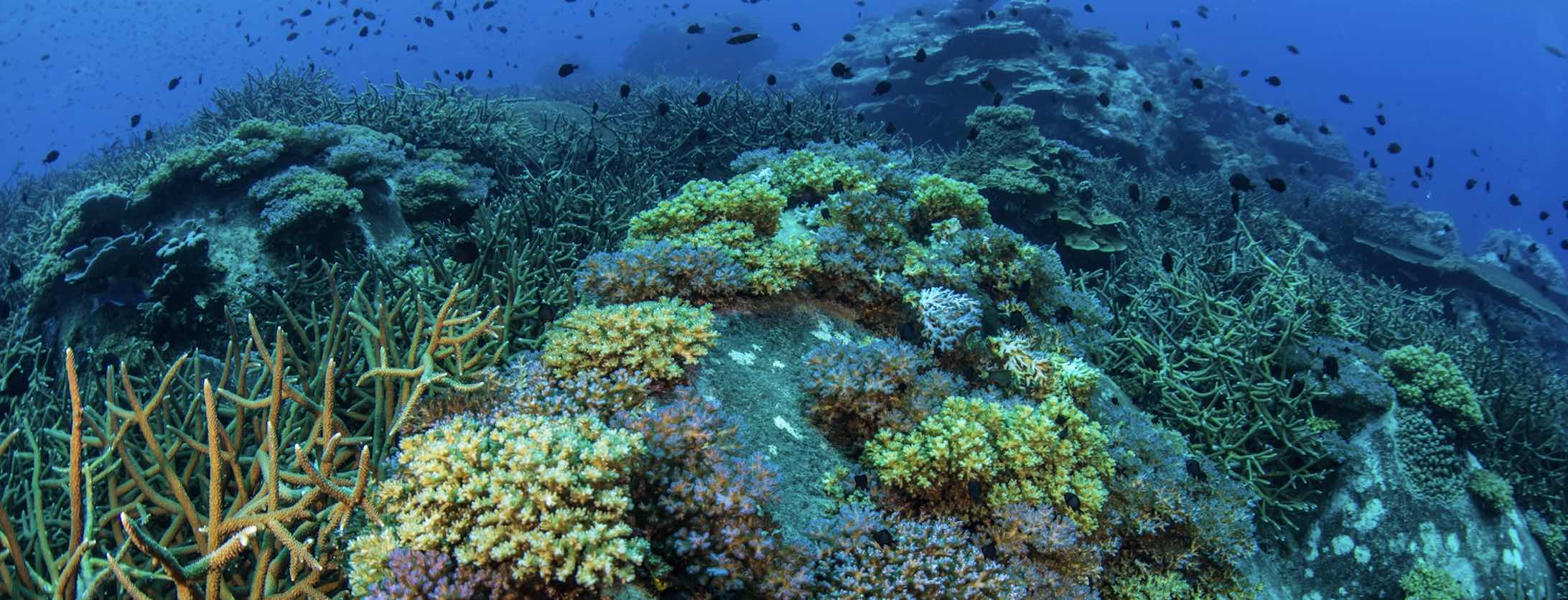

Developing a National Adaptation Planning Process in Turkmenistan
The project aims to strengthen Turkmenistan’s adaptive and resiliency capacities to climate change by integrating climate risks and adaptation measures into planning and budgeting processes via the development of a national adaptation process. The project focuses firstly on developing a national coordination mechanism and governance processes for adaptation planning and measures. Secondly, the project aims at strengthening the evidence base within the water sector to provide the information required for effective decision-making as it relates to adaptation planning. Lastly, the project will increase the capacity of those involved, directly and indirectly, in both adaptation planning within the water sector and adaptation planning in general. The project is being implemented both at the national and subnational levels, with subnational activities concentrated around water resources of the City of Ashgabat and the Province of Dashoguz.
The project “Developing a National Adaptation Planning Process in Turkmenistan” aims to strengthen Turkmenistan’s adaptive and resilience capacities by strengthening institutional framework and evidence base for climate change adaptation including adaptation planning.
Turkmenistan is vulnerable to climate change due to the steady temperature rise and increasing water deficiency. While the changing climate is impacting the entire economy, the water sector is suffering most acutely. To address these vulnerabilities, the project focuses on water resources at the national level planning and specifically on the water sectors of the City of Ashgabat and at the sub-national level the Province of Dashoguz. The water sector has been selected as the priority issue to start the NAP process due to being both a key sector of economy and a core contributing factor to other national priority sectors. In addition, the project will support the establishment of systems, processes and capabilities to build an effective NAP process. Further sectors such as agriculture, health and urban areas will be gradually added.
The project activities will address the following barriers: (1) An absence of an institutional coordination mechanism for adaption planning and implementation of the Paris Agreement; (2) Insufficient information for developing policies and plans to conduct effective adaptation planning and inform development planning as it relates to water resources; (3) Insufficient capacity of key institutions to conduct adaptation planning; (4) Private sector actors in the agriculture sector are not sufficiently informed about the climate change risks and adaptation opportunities. The project’s results will complement other key foundational measures including Turkmenistan’s Nationally Determined Contribution (NDC), the Third and the Fourth National Communication, and the National Climate Change Strategy.
The following results are expected to be delivered under the three outcomes:
- The institutional framework to implement the Paris Agreement is established;
- A coordination mechanism to implement the adaptation components of the Paris Agreement established and operationalized;
- Updating of the adaptation components of Turkmenistan’s NDC 2020 supported;
- Climate risks identified, assessed and prioritized;
- Entry points for incorporating climate risks into policies and plans related to water resources are identified;
- Adaptation options identified, budgeted, prioritized and supported by concept notes;
- The capacity of the Ministry of Agriculture and Environmental Protection is enhanced;
- The capacity of water planners is strengthened (at the national level and in Ashgabat and Dashoguz);
- Private Sector is informed about adaptation challenges, options and opportunities in the water resources sector.
In addition to the implementing partner, the Ministry of Agriculture and Environmental Protection, other project partners include the State Committee for Water Management, Mejlis (Parliament), Ministry of Finance and Economy, Hyakimlik (Municipality) of Dashoguz region, and Hyakimlik (Municipality) of Ashgabat.
Project updates
The project team has started the project implementation by conducting a gender analysis and preparation of the Gender Action Plan to ensure gender mainstreaming in all project activities. Currently, the NAP Baseline Assessment is being conducted including the assessment of public expenditures in adaptation measures and capacity building activities are being carried out to strengthen the coordination mechanisms for the NAP process in Turkmenistan.
Outcome 1: An institutional framework to implement the Paris Agreement established;
Outcome 2: The evidence base for adaptation planning in the water sector strengthened;
Outcome 3: The capacity for adaptation planning strengthened.

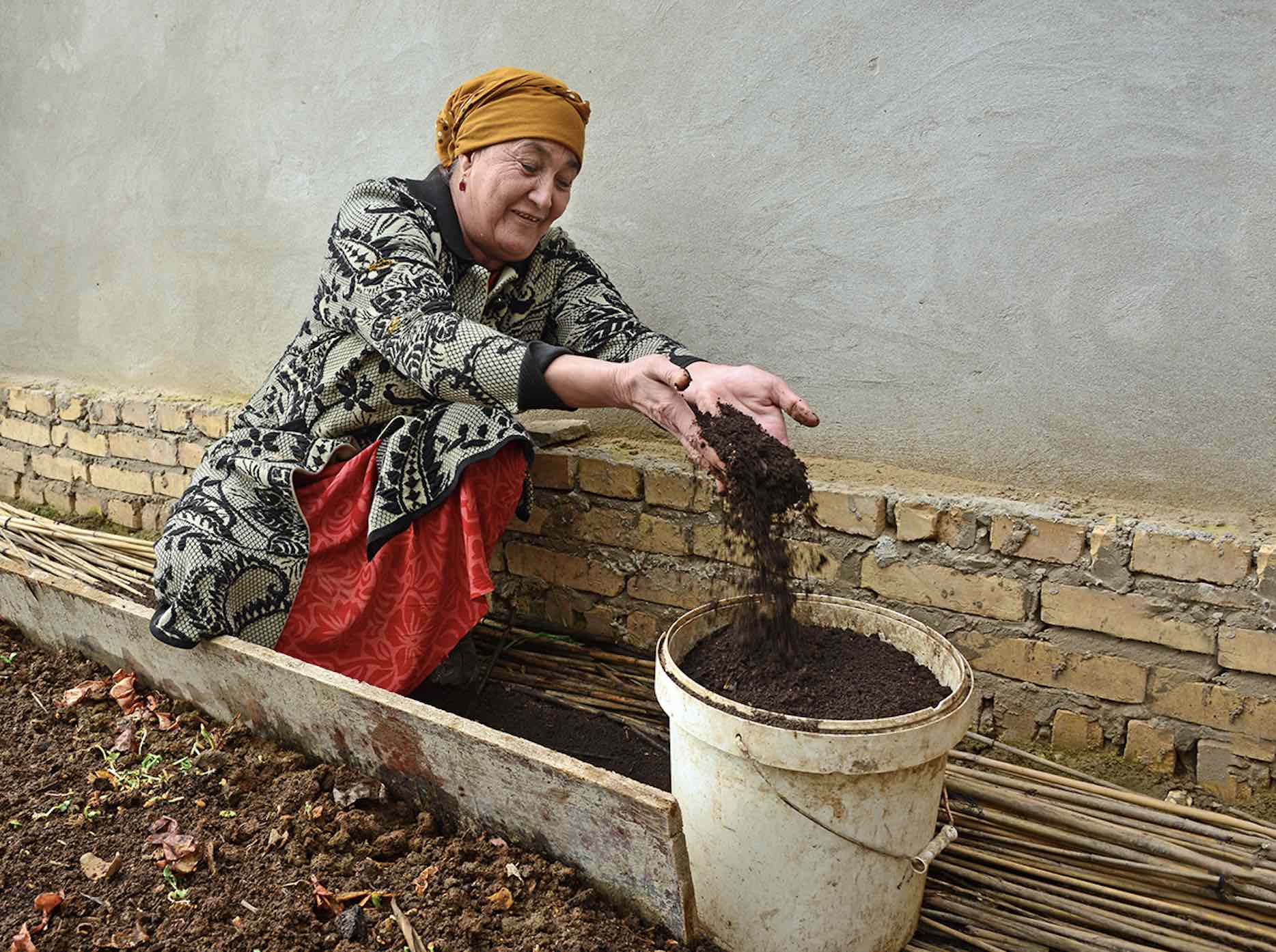
Increased Resilience to Climate Change in Northern Ghana Through the Management of Water Resources and Diversification of Livelihoods
The main objective of the 'Increased Resilience to Climate Change in Northern Ghana Through the Management of Water Resources and Diversification of Livelihoods programme (2015-2022) was to enhance the resilience and adaptive capacity of rural livelihoods to climate impacts and risks on water resources in the northern region of Ghana. The objective was achieved through key results centered on the improvement of water access and also increase institutional capacity and coordination for integrated water management to support other uses of water resources especially for the diversification of livelihoods by rural communities.
The programme targeted the three regions in the northern part of Ghana: the Upper East, Upper West and Northern Regions. Compared to other regions of the country, these three northern regions have high degree of exposure to climate variability and change characterized by increasing temperatures and decreasing and erratic rainfall. These factors make the northern regions highly vulnerable to climate change and high priority regions for climate change adaptation.
ProDocs
ProDoc - Increased Resilience to Climate Change in Northern Ghana Through the Management of Water Resources and Diversification of Livelihoods
Communications Products
Project Brief - Increased Resilience to Climate Change in Northern Ghana Through the Management of Water Resources and Diversification of Livelihoods
Brochures, Posters, Communications Products
New Water Access Reduces Disease and Improves Livelihoods in Ghana
Water is recognized as a cross-cutting resource underlying the National Growth and Poverty Reduction Strategy of the Republic of Ghana and the National Water Policy with direct linkages to the realization of the Sustainable Development Goals.
The lack of potable water caused by extreme climate events such as droughts and floods, increases the exposure of people, especially women and children, to water-borne and other hygiene-related diseases such as diarrhoea, cholera. Besides household wellbeing, water plays a central role in many industrial activities. For example, hydropower generation, transportation services, tourism and the agricultural, livestock and fisheries sectors all depend on water resources. Rainwater harvesting serves as the major source of surface water for many rural communities during the rainy season. There is high agreement between national and regional analyses that vulnerability, especially to droughts, has geographical patterns and socioeconomic associations.
The country experienced severe drought in 1983. Since the late 1990s, floods have been increasingly frequent in the northern regions. Floods affected more than 300,000 people in 1999, 630,000 in 2007/08 and 140,000 in 2010, causing deaths, damaging farmlands, and destroying livelihoods. This resulted in severe hunger, which affected the poor and reduced gross domestic product for that year.
The most severe flood occurred in 2007, during which 630,000 people were affected, through losses of life and displacement, and extensive infrastructural damage and loss of crops. This phenomenon demonstrates the potential impact of climate change on Ghana’s development.
Under a changing climate, poor farmers are finding it difficult to predict the timing of rainy seasons. Consequently, it is becoming difficult manage climate risks to crop production. Failure in crop production is one of the key factors undermining food security . The World Food Programme’s (WFP) Comprehensive Food Security and Vulnerability Analysis (2009) found that 5% of the population or 1.2 million people are food insecure.
The bulk of the food insecure population is located in the northern regions: 34% in Upper West, 15% in Upper East, and 10% in Northern region. This is the equivalent of approximately 453,000 people. The three northern regions covered by this programme are the most vulnerable. Similarly, the adaptive capacity of these three regions is the lowest nationwide due to low socioeconomic development and the heavy dependence of local economies and livelihoods on rain-fed systems such as agriculture and forestry.
Decreasing annual rainfall and its increasingly erratic pattern, on the background of climate change, are adversely affecting rural livelihoods in northern Ghana and in particular agricultural and pastoral practices. Agriculture is a major driver of Ghana’s economy and employs close to 55 percent of the total labour force.
The proposed Programme will promote four types of adaptation intervention: 1. livelihood enhancement; 2. livelihood diversification; 3. ecosystem protection and enhancement; and 4. community-level water infrastructure planning. These approaches will build up financial, natural, physical and social capital of the communities. A conservative estimate gives a total of 60,000 people as direct beneficiaries of the project. The indirect number of beneficiaries comprise the entire population in the Volta River Basin, estimated to be 8.5 million as of 2010. The main indicator of vulnerability reduction will be changes in access to water and diversification of livelihood activities. Income generation will increase by 30 % in at least 50% of households in the communities.
The main adaptation benefits of the Programme are that it will be able to provide concrete inputs into water resource management planning in the northern region by ensuring that climate change concerns are taken into account. The Programme will be able to build and enhance the adaptive capacity of the ecological systems of water catchments to climate change, once the proposed measures are adopted and implemented.
This is expected to be the first showcase in the Ghana where climate concerns are taken into account and lessons learned will be replicated to other river basins of the country. The activities that will be implemented will include producing knowledge products that capture lessons learnt on management of water resources and diversification of livelihoods under climate change. The capacity to document traditional knowledge systems as well as methods for managing knowledge will be developed, as well as the engagement of community service organizations for knowledge transfer.
The main objective of the programme is to enhance the resilience and adaptive capacity of rural livelihoods to climate impacts and risks on water resources in the northern region of Ghana. The objective will be achieved through key results centered on the improvement of water access and also increase institutional capacity and coordination for integrated water management to support other uses of water resources especially for the diversification of livelihoods by rural communities.
There are three components, each with the following outcomes that will be delivered by the programme:
COMPONENT 1: WATER RESOURCE MANAGEMENT PLANNING
Outcome 1: Improved planning and management of water resources taking into account climate change impacts on surface and groundwater sources
COMPONENT 2: COMMUNITY LEVEL IMPLEMENTATION OF WATER RESOURCE MANAGEMENT ACTIVITIES
Outcome 2: Climate resilient management of water resources by communities in Northern Ghana
COMPONENT 3: DIVERSIFICATION OF LIVELIHOODS OF RURAL COMMUNITIES
Outcome 3: Enhanced diversification of livelihoods of communities in northern Ghana
'Water at the arm-reach of community healthcare delivery', UNDP Ghana, 29 June 2021
'Increasing water supplies in rural Ghana', UNDP Ghana, 28 March 2019
'Strengthening Resilience of Rural Women through Dry Season Farming in Ghana', 28 March 2019
'Northern Regions urged to embrace climate Adaptation Fund Project', Vibe Ghana, 17 February 2017

Outcome 1 - Improved planning and management of water resources taking into account climate change impacts on surface and groundwater sources
Outcome 2 - Climate resilient management of water resources by communities in Northern Ghana
Outcome 3 - Enhanced diversification of livelihoods of communities in northern Ghana
Building Resilient Communities, Wetland Ecosystems and Associated Catchments in Uganda
The impacts of climate change, coupled with other human and environmental stressors, is increasing degradation of wetlands and their associated ecosystem services in Uganda. This is negatively affecting the livelihoods of the people living in and around the wetlands – around 4,000,000 people. In fact, over 80% of the people living adjacent to wetland areas in Uganda directly use wetland resources for their household food security needs.
Given that wetlands are highly vulnerable to changes in the quantity and quality of their water supply, climate change will most likely substantially alter ecologically important attributes of wetlands and will exacerbate the impacts from human activity. On the other hand, the loss of wetlands could exacerbate the impact of climate change in as they provide fundamental services that contribute to mitigation of such impacts.
Implemented by Ministry of Water and Environment in partnership with Ministry of Agriculture Animal Industry and Fisheries and Uganda National Meteorological Authoritym, with funding from Green Climate Fund, United Nations Development Program (UNDP) and Government of Uganda, the 8-year project Building Resilient Communities, Wetland Ecosystems and Associated Catchments in Uganda (2017-2025) is addressing the management of critical wetlands affected by a changing climate.
While restoring wetlands and their ecosystem services, based on the wise-use principles and guidelines outlined by the Ramsar Convention on Wetlands, it is also supporting sustainable land management practices and reforestation, resilient agricultural practices and alternative livelihoods for communities living in these areas. This support will reduce the pressures on the wetlands. Finally the project is strengthening the climate information and early warning systems to support these communities to make climate-resilient decisions. Up to 800,000 people in 24 districts of East and Southwestern Uganda will directly benefit.
The project is currently in its 5th year of implementation. Achievements to date include:
- 38,941 ha of degraded wetlands restored;
- 6,655ha of degraded catchment rehabilitated and/or restored;
- An increase of 64% in agricultural income and livelihood among households;
- 38% of the population have access to improved climate information.
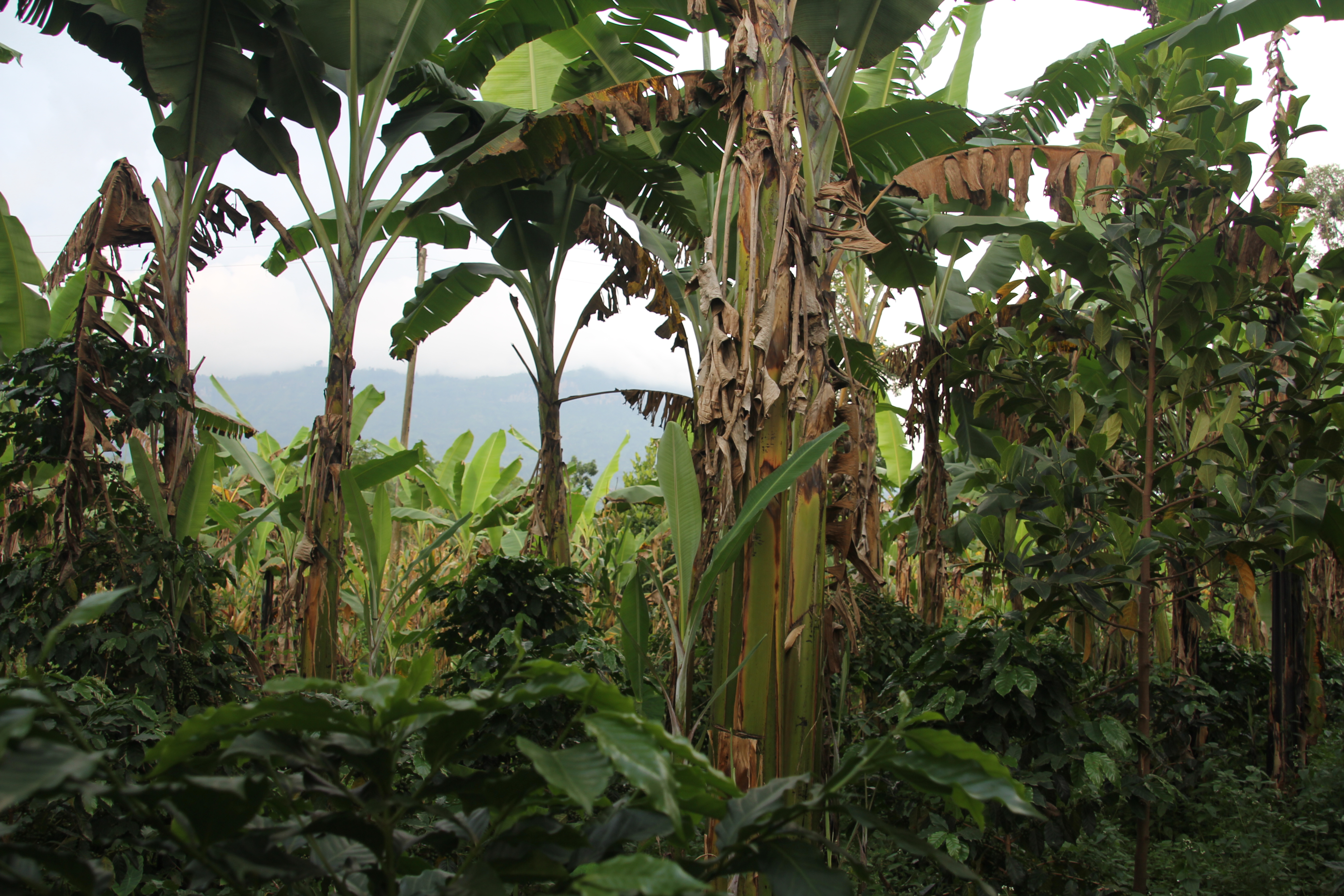

News article
News Article: New Vision (4 February 2019) - Rugunda Launches Wetlands project
News Article: Red Pepper (4 February 2019) - Govt Urges Ugandans to Support Restoration of Wetlands
ProDocs
Uganda, wetlands provide many important functions to the people, particularly in the context of food security. This is in addition to its role as a habitat for biodiversity that is also important for the economy. According to a recent 2013 study on the value of wetlands in Uganda, several market and non-market benefits are identified: “The market benefits include water for domestic use and watering of livestock, support to dry season agriculture, provision of handicrafts, building materials, and food resources such as fish, yams, vegetables, wild game, and medicine. The non-market benefits include flood control, purification of water, and maintenance of the water table, microclimate moderation, and storm protection. Wetlands also serve as habitats for important flora and fauna, have aesthetic and heritage values, and contain stocks of biodiversity of potentially high pharmaceutical value. Over 80% of the people living adjacent to wetland areas in Uganda directly use wetland resources for their household food security needs.” In addition to supporting food and water security, wetlands also support income generation and employment. “Of a total population of 34 million Ugandans, it is estimated that wetlands provide about 320,000 workers with direct employment and provide subsistence employment for over 2.4 million.”
Wetland health and resilience can easily be compromised by climate change impacts. Climate change models for Uganda predict that temperatures will continue to increase, and there will be changes in the seasonal distribution and amount of rainfalls, more frequent extreme weather events, and increases in the frequency of heavy rainfalls. Increases in temperature and erratic rainfall will result in more frequent and intense floods, droughts and heat waves, which will directly threaten wetlands and livelihoods that rely on its healthy ecosystem services. Hydrologic and drainage maps of the project targeted sites (the eastern and southwestern Wetlands Basin) indicate that most of the freshwater inflows pass through the wetlands and natural forests. These systems have played an integral role in maintaining the quality of water over the centuries. However, over the last three decades, climate change impacts, as well as other baseline (non-climate) issues such as excessive sedimentation and non-native species invasions, have resulted in substantial water quality deterioration.
Output 1: Restoration and management of wetland hydrology and associated forests
Under this sub-component, at least 760 km2 of degraded wetlands and its associated catchment will be restored and the lives of 500,000 people will be improved in selected districts of Eastern and South Western Uganda. The overall aim of the intervention is to restore the ecological and hydrological integrity of the wetland and support the development and implementation of a community-based framework for wetland management plans. This will help support climate risk management and resilient livelihoods through enhanced ecosystems services in the area.
Output 2: Improved agricultural practices and alternative livelihood options in the wetland catchment
This output will target at least 150,000 farmers including those who currently do not have secure access to irrigation, land-poor farmers, women-headed households, and the landless, to build more climate-resilient livelihoods. Investments in small-scale rural infrastructure (shallow bore wells, drip irrigation, tilling tools) for agricultural purposes, especially on-farm water management infrastructure such as dams, canals, drip irrigation systems, as well as farming best practices and crop diversification will be implemented to realize high economic return given their coverage. In addition, the output will focus on technical skills training for employment in key economic sectors viable in wetland areas, such as tourism, health and construction. Most of the beneficiaries have very low levels of education and no skills that can help them find a job. Beneficiaries will be trained in specific skills with high employability potential (e.g. earth mover, driver, assistant nurse, reception clerk in hotels, desktop publishing).Output 3: Strengthening access to climate and early warning information to farmers and other target communities to support wetland management
Output 3: Strengthening access to climate and early warning information to farmers and other target communities to support wetland management
This output will focus on strengthening access to reliable climate-related information and scaling up advisories for farmers and other target communities in the two wetland target areas, to improve the adaptation capacity of the entire population in and around the wetlands – around 1 million people. This will include the expansion of networks that generate and process climate-related data into relevant information to the scale and location of local districts, villages or communities, as well as dissemination of climate-related information/services, advisories and early warnings to communities. A strong focus of this output will be on delivering actionable climate-related information to communities, taking the form of agro-met advisories for agriculture, as well as the dissemination channels for making information available to the “last mile.”
'To destroy Uganda, destroy wetlands -- Govt official', UNDP Uganda, February 2022
'Government of Uganda and UNDP launch implementation of a $44.26 million project to restore wetlands and build community resilience', ReliefWeb, 29 November 2017
'Uganda, UNDP Sign Landmark Financing Agreement to Restore Wetlands', Chimp Reports, 23 August 2017
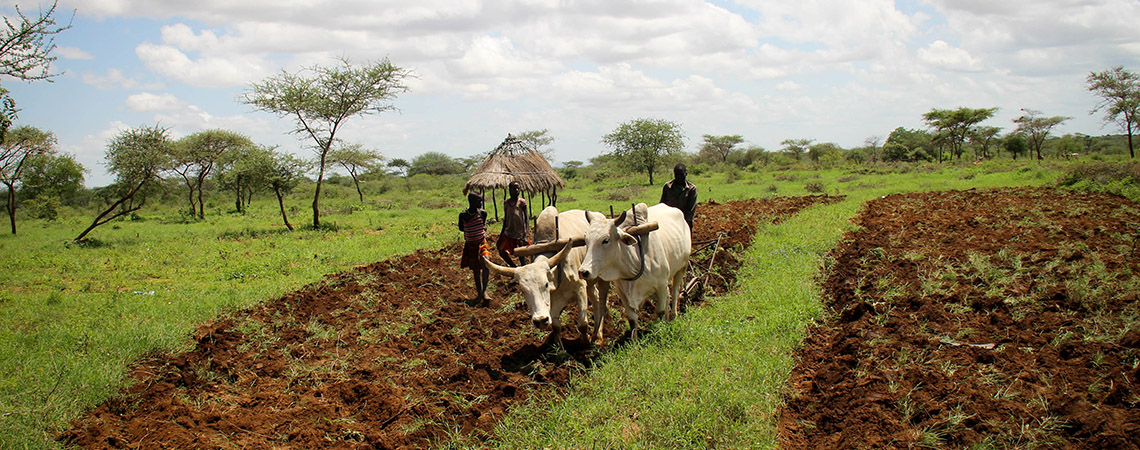
Output 1: Restoration and management of wetland hydrology and associated forests
Output 2: Improved agricultural practices and alternative livelihood options in the wetland catchment
Output 3: Strengthening access to climate and early warning information to farmers and other target communities to support wetland management
Capacity Development for Improved National and International Environmental Management in Seychelles
The Environment Management Plan of Seychelles (EMPS) is the principal institutional mechanism for addressing national and international environmental concerns. Currently, there is a lack of a comprehensive framework for linking these concerns with other national development priorities. Further, as a result of deficiencies in the current institutional and policy framework, there are unnecessary divisions between sectors, ministries and organizations/NGOs involved in conservation.
This UNDP-supported, GEF Trust funded project therefore, is designed to address key institutional barriers and related capacity limitations that constrain the effectiveness of the current EMPS operations. It will also help integrate local and global environmental management and enhance the capacity to implement global environmental management objectives within national programmes.
ProDocs
(More information to come)
The project has three major outcomes with the following associated outputs –
- Awareness and capacity are developed for mainstreaming global environment conventions into national programmes. This will include a review, extension and incorporation of the international commitments in the EMPS (Outcome 1.1); Establishment of a new EMPS Secretariat (Output 1.2); Identification and appointment of National Centres of Expertise for EMPS implementation (Output 1.3) and; Training of key technical and management staff from lead stakeholder groups on the global environmental conventions and mainstreaming opportunities (Outcome 1.4)
- Environmental information and reporting is strengthened through the development of a central environmental database on key indicators related to global conventions (Outcome 2.1) and a “State of the Environment” reporting framework (Outcome 2.2)
- Capacity for local implementation of global environmental conventions is developed, applied and disseminated. This will be achieved through the development of an institutional framework (legal and organizational basis) for mainstreaming global objectives into local land and water management in residential and rural contexts (Outcome 3.1); Development of a training programme for promoting integrated implementation of climate change, biodiversity and land management objectives in land and water management at the local level (Outcome 3.2); Training of government staff, NGOs and local stakeholders on integrated approaches to Rio Conventions implementation at the local level (Outcome 3.3); Design of demonstration sub-projects to promote integrated environmental management at the local level (Outcome 3.4) and; Monitoring, reporting and dissemination of experiences that support Rio Conventions implementation (Outcome 3.5)
Project monitoring and evaluation will be conducted in accordance with established UNDP and GEF procedures.
The Programme Coordination Unit (PCU) will be responsible for day-to-day monitoring activities including submission of (i) Inception Report; (ii) Annual Project Report; (iii) Project Implementation Review; (iv) Quarterly Progress Reports; and (v) Project Terminal Report.
Annual Monitoring will occur through the Tripartite Project Review (TPR). The TPR will be composed of representatives of GOS, UNDP and the Project. Additionally, the project will be subjected to at least one independent external evaluation.
(More information to come)
Mainstreaming GE Aspects in the Planning and Monitoring processes of the NHDI in Morocco
This issue of direct and indirect poverty and environment nexus has been recognized by the government in the context of currently launched National Human Development Initiative that aims at addressing poverty issues by introducing effective decentralized system of governance and natural resource management. This process has been informed by NCSA that highlighted importance of capacity development for achievement of mutually reinforcing goals of NHDI and global environmental objectives as stemmed from the “Rio Conventions”.
The cross-cutting capacity building project was designed in closed partnership with NHDI process, to reinforce its effectiveness by a full-fledge global environmental mainstreaming into the process of local development. Benefits of global environmental management through improved land and water management, reversing habitat loss, climate risk management and low carbon development trajectories were brought into the local development agenda. Local development, supported by the flagship NHDI process, is inherently a cross-sectoral process, whereby all sectoral objectives are brought together in the context of territorial planning and socio-economic development at sub-national level. Therefore, integrating global environmental management targets synergistically into the context of local development offers the way of effective and efficient implementation of Morocco’s obligations to the Rio Conventions.
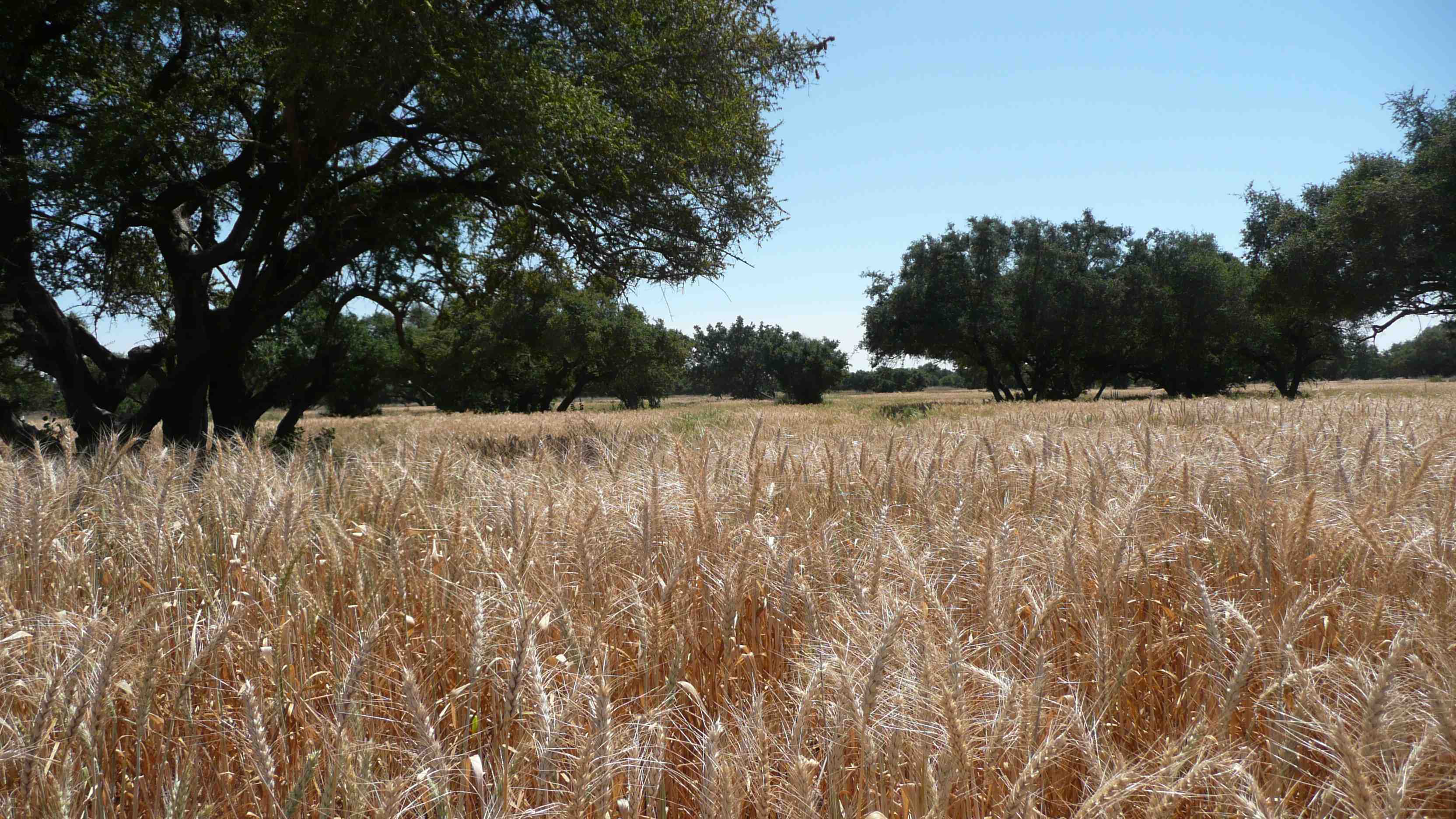
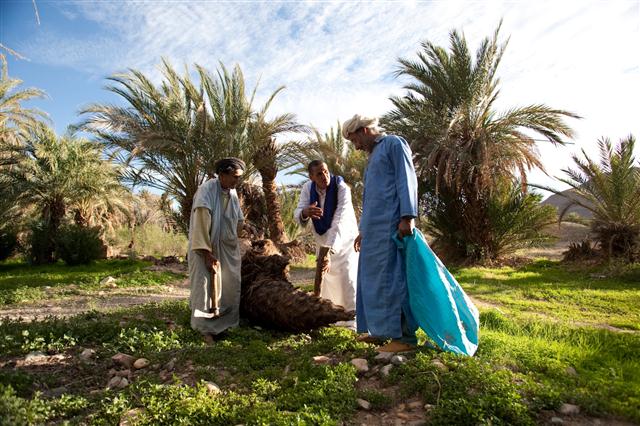
Document
Project Summary
During the last 30 years, Morocco has embarked on a gradual, but solid program of human development and political liberalization. Since the 1970s, gross national income per person has more than tripled from $550 to $1750. The average life expectancy has increased from 55 in 1970 to 71 in 2005. One of the key development challenges is Morocco’s high incidence of poverty. Although poverty has declined from 19 to an estimated 15 percent over the period from 1999 to 2004, this rate remains high. Poverty continues to be typically a rural phenomenon, with more than 25 percent of the rural population living below the poverty line, compared to just 12 percent of the urban population. The depth and severity of poverty is also much higher in rural areas, and has increased significantly since 1991. Apart from macro economic, governance and rule of law and socio-economic causes high incidents of poverty largely relate to agriculture and food production systems, chronic water scarcity that in prolonged drought situations often aggravate shortages. Clearly poverty is subject to deterioration in the event of repeated drought and the ensuing low growth rates.
This issue of direct and indirect poverty and environment nexus has been recognized by the government in the context of currently launched National Human Development Initiative that aims at addressing poverty issues by introducing effective decentralized system of governance and natural resource management. This process has been informed by NCSA that highlighted importance of capacity development for achievement of mutually reinforcing goals of NHDI and global environmental objectives as stemmed from the “Rio Conventions”.
The cross-cutting capacity building project is designed in closed partnership with NHDI process and will reinforce its effectiveness by a full-fledge global environmental mainstreaming into the process of local development. Benefits of global environmental management through improved land and water management, reversing habitat loss, climate risk management and low carbon development trajectories will be brought into the local development agenda. Local development, supported by the flagship NHDI process, is inherently a cross-sectorial process, whereby all sectoral objectives are brought together in the context of territorial planning and socio-economic development at sub-national level. Therefore, integrating global environmental management targets synergistically into the context of local development offers the way of effective and efficient implementation of Morocco’s obligations to “Rio Conventions”.
The Commitment of Morocco to the Rio Conventions
Morocco has ratified the Rio Conventions in order to subscribe to the international framework of global environmental management and has, likewise, met its commitments through the adoption of strategies and reports to the conventions.
The National Capacity Self-Assessment (NCSA) as the basis of the Project
The NCSA Project, which was launched in 2004 and operationally completed in 2006, sought to identify national priorities and requirements in terms of capacity enhancement in the area of global environmental management, notably in what concerns Biodiversity, Climate Change, and Desertification. The aim was to catalyze sustained actions both at the national and local levels. The NCSA undertook eight consultations which fall within its agenda, notably in what concerns the inventory of Conventions: identification of capacities which warrant enhancement; and developing capacity-building strategy.
Among the essential priorities identified and recommended by the NCSA, enhancement of capacities of local actors (communities and authorities) so that they may better translate national commitments to the three conventions into concrete local actions is among the top priorities. Current process of decentralisation dictates a greater emphasis on local capacities to enable more effective local decision-making and action. This has been identified as strong recommendation of NCSA in Morocco which constitutes the basis of the present project.
Project Conformity with GEF Guidelines
The proposed project addresses the objectives of the three GEF focal areas (biodiversity, climate change, and sustainable land management), and specifically fits under the strategic priority related to Cross-cutting Capacity-Building (CB-2). The project is also fully in line with the Interim Guidelines for Cross-cutting Capacity Building Projects. The project is specifically in line with the CB-2 programming framework related to: “Mainstreaming Global Environmental Priorities into National Policies and Programs,” whereby the CB-2 projects would focus on developing capacities for countries to improve their ability to meet their obligations under the three Rio Conventions by integrating global environmental priorities into national policies, plans and programs, particularly macro-economic and poverty-reduction programs/strategies.
The Context of Sustainable Development
Morocco has developed a whole set of plans, strategies, and programs covering land-use planning, rural development, natural resources management, and, more recently, human development. Some of these plans, strategies, and programs are manifestly sector-based in scope. Others are cross-cutting in their scope and aim at shoring up sustainable development by addressing poverty-reduction and environmental degradation. Below are some of the strategies and programs which are directly linked with the present project:
- The National Strategy for the Protection of the Environment and Sustainable Development, and its National Action Plan;
- Agricultural and Rural Development Strategies;
- The National Tourism Strategy;
- The National Energy Strategy;
- Hydraulic Resources Management Strategies.
Morocco has also developed significant legal mechanisms relating to sustainable development and environmental management. Nevertheless, the updating of the legal framework now proves to be necessary and urgent. The current framework needs to be supported by robust environmental data and strategic directions to address the various threats country’s natural resources. Improvement of legal framework and a decision-making set up are necessary for the implementation of the Rio Conventions. This will also contribute to the consolidation of the rule of law and will foster progress and sustainable human development.
At the local level, the main tool of local planning is the Plan for Economic and Social Development (PESD), which is established annually by the Communal Council and transmitted to the Provincial entities for budgetary allocation. The development process of the PESD doesn't integrate such mechanisms as consultations with local communities, nor does it make use of any clear and transparent method for determining and organizing local needs. The basis of this project is to contribute to the consolidation of this PESD development process and integrating the global environmental objectives in this process.
The institutional Context relating to the Global Environment
Several public and non-public institutions in Morocco are closely involved in the implementation of policies and programs pertaining sustainable development and the global environmental management. The key governmental institutions will be directly engaged into this project. The project is based on partnership with local authorities at the communal, provincial, and regional levels. The partnership will materialise through a set-up of consultation mechanisms between various elected councils (regional, provincial, and communal) and their chairpersons and the representatives of local authorities –namely the Wali (of the region); the Governor (of the province), and the Caid (of the community). The project will also ensure the involvement of local and national NGOs, as well as local and village organizations and associations (Cooperatives, Women’s Associations, Village Associations).
The NHDI and its linkages with the GE issues
It is essentially this inadequacy in the development of the PESD which the NHDI attempts to address at the level of 403 rural communes and 250 urban communes which have been declared as being priority areas for intervention. The NHDI has opted for a participatory and consultation-based process for the devising of a local development plan which will be developed by 2010 and culminate in the drawing up of PESDs for all the country’s communes. Contributing to this process. The integration of the environmental component constitutes the basis of the present project.
All three conventions recognise the linkages between the global environmental management issues and efforts for poverty reduction. The NHDI process drives the poverty reduction agenda in Morocco, whereby global environmental management issues, such as desertification and drought, biodiversity loss and climate change will be brought into the mainstay of this local development process. The OECD guidelines about the integration of Rio conventions into the development underline importance of global environment mainstreaming into the poverty reduction strategies and other national or local planning processes.
The proposed project will follow the key principles and recommendations outlined into the OECD/DAC guidelines and in so doing, avoid creating specific capacities tailored to1 the demands of the Conventions, but isolated from the national policy and planning process . The project will also apply OECD’s good practice guidance on environmental mainstreaming by applying Strategic Environmental Assessment methodology2. The project is already conceived in a way that allows SEA tools and methods to be employed. By targeting a nation-wide, local development planning process (NHDI) the integration of global environmental issues will take place in a comprehensive way, encompassing priority setting, budgeting as well as indicator framework for monitoring and evaluation, constituting the entire cycle. This methodology will help ensure a full-fledge integration.
Besides the considerable funds (10 billion Dirhams to be invested between 2006 and 2010) that have been earmarked for its programs, the magnitude of NHDI may also be appreciated by way of its overall approach, which takes into account decentralization and increasing de- centralization of State structures. The NHDI thus provides an important basis for conception and implementation of the project.
Other Key Initiatives relating to the Project:
- The National Master plan for Land-Use Planning (NMLUP) and the Regional Master plan for Land Use Planning (RMLUP);
- The Master-plan for Training of Local Authorities
- Project's strategy in the Integration of GE in the Planning and Monitoring Processes of the NHDI and local strategic planning
All the actors operating in the area of development have agreed that the inadequate capacities of local actors constitute a major obstacle to any successful establishment of a perennial dynamics of local development. The same observation has been made by the NCSA: these insufficiencies thwart the creation of synergies conducive to the implementation of the three Conventions and their effective incorporation into the reality of local communities.
The project has identified a strong demand for the integration of GE aspects in the existing consultation and planning tools. There is not a real need for re-inventing new tools, for many programs, notably the NHDI and the current local strategic planning process, have efficient tools. The problem has to do with the fact that the environmental aspect is not sufficiently addressed, especially country’s global environmental objectives as per conventions’ requirements. Notwithstanding the multiplicity of planning tools, the NHDI and the local strategic planning process, stand out as being the most complete and is thus poised to be extended to all the country’s communes. For the time being, the NHDI covers 403 rural communes and 250 urban communes and the local strategic development Plan covers remaining rural communes. But the process will steadily be adopted by the other communes.
Moreover, besides the considerable funds that they allocate to a whole range of projects on the basis of a participatory approach, the NHDI and the local strategic planning process are to be appreciated for the overall approach which takes into account the de-centralization of State structures. For all these reasons, and thanks to a close partnership with the key champions of the process, the 2 initiatives have been selected as a powerful vector for this project. NCSA has likewise identified the main constraints at the systemic, institutional, and individual levels that will be addressed by the project
The project has thus been elaborated taking into account the above stakes and the long-term goal of fulfilling country commitments to the global environmental management in the context of fiscal and governance decentralization process currently underway. The project specific objective is to integrate global environmental objectives of Morocco into the NHDI and local strategic development planning, budgeting and monitoring processes.
Source: Morocco's Request for Funding Under the GEF Trust Fund (April, 2009)
- Outcome 1: The institutional framework for the integration of GE management in the NHDI and local strategic development planning and monitoring is developed.
- Output 1.1: Methodological approaches and tools for integrating global environmental commitments into the development planning at local level are consolidated and introduced.
- Output 1.2: The institutional mandates and procedures for environmental mainstreaming at the provincial, regional and national levels are clarified.
- Output 1.3: A set of global environmental indicators to be part of the monitoring system of the NHDI and strategic local plans is introduced.
- Outcome 2: The capacities for systematic mainstreaming of the global environmental targets into the local planning are developed
- Output 2.1: Priority global environmental targets to be addressed by the project are identified and agreed upon by all project partners as part of the NHDI and strategic local planning activities.
- Output 2.2: The capacities of concerned stakeholders to integrate priority GE issues into local development planning are strengthened by targeted training, procedural and institutional arrangements.
- Output 2.3: Testing a new planning approach with global environmental targets and indicators at local and regional level in the framework of NHDI and strategic local planning process for methodological validation and procedural approval.
- Outcome 3: A system of project’s adaptive management and lessons learned established
- Output 3.1: Project management infrastructure in place.
- Output 3.2: Communication and knowledge management mechanisms established and operational to identify lessons and good practices for global environmental mainstreaming into the development planning.
Project Start:
Project Inception Workshop: will be held within the first 2 months of project start with those with assigned roles in the project organization structure, UNDP country office and where appropriate/feasible regional technical policy and programme advisors as well as other stakeholders. The Inception Workshop is crucial to building ownership for the project results and to plan the first year annual work plan.
Daily:
Day to day monitoring of implementation progress: will be the responsibility of the Project Manager, based on the project's Annual Work Plan and its indicators, with overall guidance from the Project Director. The Project Team will inform the UNDP-CO of any delays or difficulties faced during implementation so that the appropriate support or corrective measures can be adopted in a timely and remedial fashion.
Quarterly:
Project Progress Reports (PPR): quarterly reports will be assembled based on the information recorded and monitored in the UNDP Enhanced Results Based Management Platform. Risk analysis will be logged and regularly updated in ATLAS.
Annually:
Annual Project Review/Project Implementation Reports (APR/PIR): This key report is prepared to monitor progress made since project start and in particular for the previous reporting period (30 June to 1 July). The APR/PIR combines both UNDP and GEF reporting requirements.
Periodic Monitoring through Site Visits:
UNDP CO and the UNDP RCU will conduct visits to project sites based on the agreed schedule in the project's Inception Report/Annual Work Plan to assess first hand project progress. Other members of the Project Board may also join these visits. A Field Visit Report/BTOR will be prepared by the CO and UNDP RCU and will be circulated no less than one month after the visit to the project team and Project Board members.
Mid-Term of Project Cycle:
Mid-Term Evaluation: will determine progress being made toward the achievement of outcomes and will identify course correction if needed. It will focus on the effectiveness, efficiency and timeliness of project implementation; will highlight issues requiring decisions and actions; and will present initial lessons learned about project design, implementation and management. Findings of this review will be incorporated as recommendations for enhanced implementation during the final half of the project’s term.
End of Project:
Final Evaluation: will take place three months prior to the final Project Board meeting and will be undertaken in accordance with UNDP and GEF guidance. The final evaluation will focus on the delivery of the project’s results as initially planned (and as corrected after the mid-term evaluation, if any such correction took place). The final evaluation will look at impact and sustainability of results, including the contribution to capacity development and the achievement of global environmental benefits/goals. The Terminal Evaluation should also provide recommendations for follow-up activities.
Project Terminal Report: This comprehensive report will summarize the results achieved (objectives, outcomes, outputs), lessons learned, problems met and areas where results may not have been achieved. It will also lie out recommendations for any further steps that may need to be taken to ensure sustainability and replicability of the project’s results.
Learning and Knowledge Sharing:
Results from the project will be disseminated within and beyond the project intervention zone through existing information sharing networks and forums.
The project will identify and participate, as relevant and appropriate, in scientific, policy-based and/or any other networks, which may be of benefit to project implementation though lessons learned. The project will identify, analyze, and share lessons learned that might be beneficial in the design and implementation of similar future projects.
Finally, there will be a two-way flow of information between this project and other projects of a similar focus.
Capacity Building for Environmental Policy Institutions for Integration of Global Environment Commitments in Montenegro
Project component 1 focused on developing national capacities for improved management and implementation of the three Rio Conventions by developing global environmental management indicators as part of the Montenegro's environmental governance regime. Component 2 of the project was a complementary capacity building set of activities, developing individual and institutional capacities to use global environmental management indicators as a monitoring tool to assess the intervention performance and institutional sustainability.
Montenegro's National Capacity Self-Assessment (NCSA) identified a number of common weaknesses in the national implementation of the Rio Conventions. As a result, the NCSA Action Plan prioritized a suite of national cross-cutting capacity development actions. The top priority action identified was to harmonize the country's environmental legislative framework so that it becomes fully compliant with Rio Convention commitments. This project was an important contribution to this objective by developing and piloting the application of global environmental management indicators that will help Montenegro assess the extent to which policy interventions are achieving global environmental benefits.
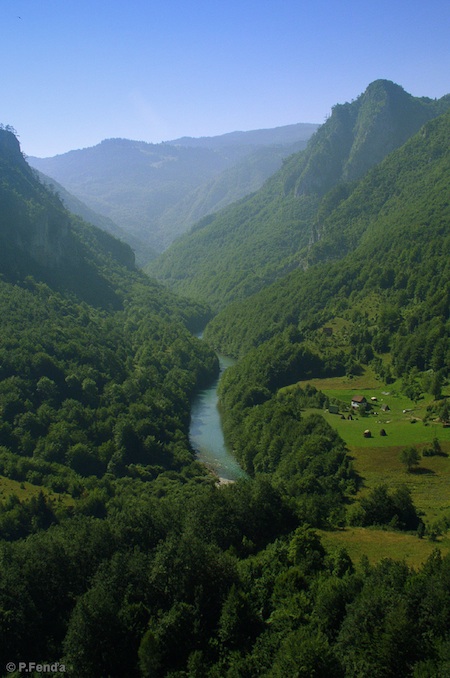


Reports and Publications of relevance to Country Teams
Risk-Proofing the Western Balkans: Empowering People to Prevent Disasters
Project Brief / Fact Sheet
Capacity Building for Environmental Policy Institutions for Integration of Global Environment Commitments in Montenegro - Project Brief (2011)
Document
Capacity Building for Environmental Policy Institutions for Integration of Global Environment Commitments in Montenegro - Request for CEO Approval Document (June 2011)
As a priority objective of the three Rio Conventions, donors and the GEF, the strategic approach of capacity development is directed towards facilitating cross-sectoral and participatory approaches to natural resource management planning and implementation. Guided by the GEF “Strategic Approach to Enhance Capacity Building”, approved by the GEF Council in November 2003, this Multi-Focal Area project is guided by the principle of targeting capacity development activities across focal areas (cross-cutting) in order to create synergies.
Project component 1 focuses on developing national capacities for improved management and implementation of the three Rio Conventions by developing global environmental management indicators as part of the Montenegro's environmental governance regime. Component 2 of the project is a complementary capacity building set of activities, developing individual and institutional capacities to use global environmental management indicators as a monitoring tool to assess the intervention performance and institutional sustainability.
Montenegro's National Capacity Self- Assessment (NCSA) identified a number of common weaknesses in the national implementation of the Rio Conventions. As a result, the NCSA Action Plan prioritized a suite of national cross-cutting capacity development actions. The top priority action identified was to harmonize the country's environmental legislative framework so that it becomes fully compliant with Rio Convention commitments. This project will be an important contribution to this objective by developing and piloting the application of global environmental management indicators that will help Montenegro assess the extent to which policy interventions are achieving global environmental benefits.
Montenegro has approved a number of strategies and plans to address the causes and impacts of climate change, biodiversity and land degradation. Despite these positive developments there still exists a considerable fragmentation of mandates and responsibilities within and among many institutions in the field of environment. The Ministry for Sustainable Development and Tourism (MSDT) is not the only ministry responsible for aspects of environmental protection. The largest area of environmental policy that is not within the mandate of the Ministry of Spatial Planning and Environment (MSPE) is water, which instead falls under the Ministry of Agriculture, Forestry and Foods (MAFF).
A number of other ministries are responsible for certain aspects of environmental protection, such as the Ministry of Health, which is responsible for the management and treatment of medical waste and the Ministry of Transport, Maritime Affairs and Telecommunications, which is responsible for addressing the causes and impacts of marine pollution. There are a number of other national administrative institutions that serve to implement and enforce environment-related provisions of national policies, programmes and plans, such as the Hydrometeorological Institute, the Seismological Institute and the Office of Public Works.
The Environmental Protection Agency was established in order to effectively perform professional activities related to environmental monitoring, collection and dissemination of data and coordination and management of the national information system of environmental protection.
The expected outcome of this project is that a systematic and sustainable approach to assessing global environmental achievements through the implementation of national policies, programmes and plans has been initiated. This project will also be an important contribution to the national experiences in developing and implementing tools and practices for measuring, reporting, and verifying the cost-effectiveness of official development assistance to implementing multilateral environmental agreements, in particular the Rio Conventions.
The project is targeting the use and mainstreaming of global environmental indicators within the construct of regional development and spatial planning with a view to meeting the objectives of global environmental conventions at the national, regional, district and municipal levels. The EMIS will also help the EPA to monitor and evaluate the effectiveness of policies, programmes, and plans structured to meet environment and development objectives under the overall rubric of the NSSD.
A Data Flow System (with specific protocols regarding the collection, storage, analysis and dissemination of the data based on indicators) will be designed for EPA and Hydro-meteorological Institute, as well as other institutions concerned with CBD, CCD, and FCCC implementation. The project is reconciling these global environmental indicators with other target indicators that are being introduced to assess the implementation of the National Spatial Plan 2020 and Tourism Master Plan 2020 at the regional level, with special attention to assessing low-emission, climate resilient development strategies (LECRDS).
Source: Montenegro and the GEF (2011)
- Outcome 1: Environmental management information system and indicator framework for global environmental management developed and applied on a pilot basis
- Output 1.1: Set of uniform indicators and guidance for application developed for measuring the contribution of regional development policy and spatial planning to meeting global environmental objectives
- Output 1.2: Data Flow System (regulations / protocols) designed and introduced for institutions concerned with CBD, CCD, UNFCCC and issues
- Output 1.3: A web-based advanced tools for environmental data / metadata storage for environmental policy formulation tested and adopted
- Output 1.4: Application of indicator system for global environment integration piloted in relation to National Spatial Plan-2020 and Tourism Master Plan - 2020
- Outcome 2: Institutional capacity of the Environmental Protection Agency strengthened to perform compliance monitoring in relation to global environmental conventions and a system of knowledge management established
- Output 2.1: Institutional reforms (based on a functional analysis performed through a consultative process) undertaken to enable incorporation of global environment commitments into planning and monitoring processes
- Output 2.2: Accredited training programme developed and delivered for the Environmental Protection Agency staff and other relevant organizations (on advanced planning tools, information systems for global and national environmental management, indicators and trend analysis methods)
- Output 2.3: The “Environmental Sustainability Theme Manager Office” system for integration of global environmental objectives customized and introduced at the Environmental Protection Agency
- Output 2.4: M&E and risk management system established
- Output 2.5: A web-based environmental project database for improved coordination and output analysis established
- Outcome 3: Knowledge sharing and project management
- Output 3.1: Project communication strategy developed
- Output 3.2: Lessons learned and knowledge products produced
- Output 3.3: Project website for wider dissemination established
Project Start:
Project Inception Workshop: will be held within the first 2 months of project start with those with assigned roles in the project organization structure, UNDP country office and where appropriate/feasible regional technical policy and programme advisors as well as other stakeholders. The Inception Workshop is crucial to building ownership for the project results and to plan the first year annual work plan.
Daily:
Day to day monitoring of implementation progress: will be the responsibility of the Project Manager, based on the project's Annual Work Plan and its indicators, with overall guidance from the Project Director. The Project Team will inform the UNDP-CO of any delays or difficulties faced during implementation so that the appropriate support or corrective measures can be adopted in a timely and remedial fashion.
Quarterly:
Project Progress Reports (PPR): quarterly reports will be assembled based on the information recorded and monitored in the UNDP Enhanced Results Based Management Platform. Risk analysis will be logged and regularly updated in ATLAS.
Annually:
Annual Project Review/Project Implementation Reports (APR/PIR): This key report is prepared to monitor progress made since project start and in particular for the previous reporting period (30 June to 1 July). The APR/PIR combines both UNDP and GEF reporting requirements.
Periodic Monitoring through Site Visits:
UNDP CO and the UNDP RCU will conduct visits to project sites based on the agreed schedule in the project's Inception Report/Annual Work Plan to assess first hand project progress. Other members of the Project Board may also join these visits. A Field Visit Report/BTOR will be prepared by the CO and UNDP RCU and will be circulated no less than one month after the visit to the project team and Project Board members.
Mid-Term of Project Cycle:
Mid-Term Evaluation: will determine progress being made toward the achievement of outcomes and will identify course correction if needed. It will focus on the effectiveness, efficiency and timeliness of project implementation; will highlight issues requiring decisions and actions; and will present initial lessons learned about project design, implementation and management. Findings of this review will be incorporated as recommendations for enhanced implementation during the final half of the project’s term.
End of Project:
Final Evaluation: will take place three months prior to the final Project Board meeting and will be undertaken in accordance with UNDP and GEF guidance. The final evaluation will focus on the delivery of the project’s results as initially planned (and as corrected after the mid-term evaluation, if any such correction took place). The final evaluation will look at impact and sustainability of results, including the contribution to capacity development and the achievement of global environmental benefits/goals. The Terminal Evaluation should also provide recommendations for follow-up activities.
Project Terminal Report: This comprehensive report will summarize the results achieved (objectives, outcomes, outputs), lessons learned, problems met and areas where results may not have been achieved. It will also lie out recommendations for any further steps that may need to be taken to ensure sustainability and replicability of the project’s results.
Learning and Knowledge Sharing:
Results from the project will be disseminated within and beyond the project intervention zone through existing information sharing networks and forums.
The project will identify and participate, as relevant and appropriate, in scientific, policy-based and/or any other networks, which may be of benefit to project implementation though lessons learned. The project will identify, analyze, and share lessons learned that might be beneficial in the design and implementation of similar future projects.
Finally, there will be a two-way flow of information between this project and other projects of a similar focus.
